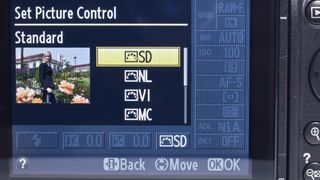Why you can trust TechRadar
Chroma noise is much less of an issue in high sensitivity images than it used to be, and it's impressive just how little coloured speckling is visible in images captured with the D5100 in its highest ISO setting, ISO 25,600 (equivalent) when noise reduction is set to the default Normal value.
At 100% on screen (or at actual pixels in Photoshop), there is some fairly subtle false colouring visible, and there's an obvious speckled texture of luminance noise, but the images are still usable and many cases would make decent A3 (23.4 x 16.5-inch) prints.
As we would expect, images improve significantly when the sensitivity settings is kept below the expansions settings and while there is a dip in the level of detail resolved at ISO 6400, the results are still very respectable.

In the past Nikon's auto white balance (AWB) system has been accused of being a little too accurate, so that warm light is rendered neutral and some of the atmosphere of the scene is lost. The Nikon D5100's AWB system seems to fare a little better on this score, but there is a tendency for it to make scenes captured under hazy sunshine look a little too yellow.
This is especially noticeable with landscapes containing lush, green grass, but it is effectively countered by switching from the Standard Picture Control mode to Landscape mode, since this boosts greens and blues.
Nikon has some of the best phase detection AF systems around, and the D5100's doesn't disappoint. Paired with a Nikkor AF-S 24-70mm f/2.8G ED, it proved up to the job of keeping pace with cars moving at 80mph on a race track.

The contrast detection system available in Live View mode is also good, only struggling to find sharp focus in fairly low light or when the subject is very close. That said, the subject tends to glide into sharp register rather than snapping into focus as it does with the phase detection system.
There's very little to say about the D5100's metering system, apart from it works very well. Although the exposure compensation facility still comes in handy occasionally, in its Matrix mode the system usually takes brighter or darker than average subjects in its stride. The camera's dynamic range is also good, so highlight and shadow detail isn't lost earlier than it should be.
All things considered, the Nikon D5100 is a very capable camera.

